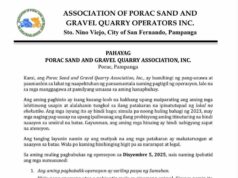Dr. Rhodora Cruz, head of the DOH’s tuberculosis prevention center in Central Luzon, said in a press conference here yesterday that a combination of old and new drugs used for DRTB patients over a nine-month period at the Jose B. Lingad Regional Hospital here have been found effective and are set to be promoted nationwide.
Cruz said the new method was pre-qualified by the World Health Orgnization (WHO) before it was piloted in three regions in the Philippines and that it was also found effective in some other Asian countries such as India and Indonesia.
MDR-TB is TB that does not respond to at least isoniazid and rifampicin, the two most powerful anti-TB drugs and its treatment used to be limited and expensive, with medicines not readily available, Cruz explained.
Cruz noted that treatment of (MDR-TB) patients can now be done in nine months, instead of the old and more expensive method that require treatment for as long as 24 months.
She stressed, however, that the treatment must be done by trained personnel at health centers, since some of the medications require intra-muscular injections.
She also noted that while the new method of treatment of MDR-TB is yet to be launched this month, rural health personnel in various parts of Central Luzon have already been trained to treat patients of the TB variety at no cost to patients.
Nineteen hospitals and rural health units (RHUs) in Central Luzon already have personnel and equipment for diagnosing MDR-TB, while 14 of these hospitals and RHUs have the means to treat the patients she added.
The DOH regional office reported successful treatment of 15 out of 23 MDR-TB patients in Central Luzon. On the other hand, 29,974 patients of ordinary TB were cured out of 32,261 victims diagnosed in the region.




